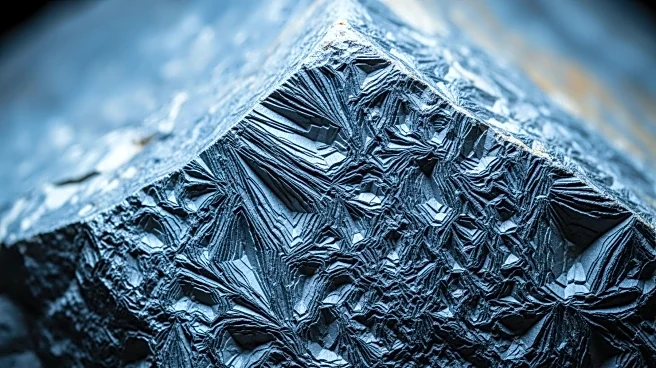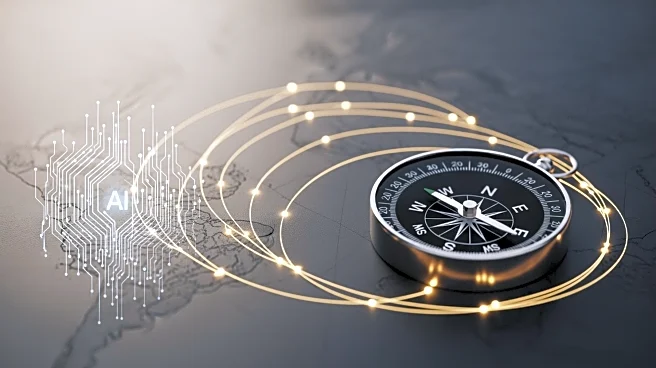What's Happening?
A recent study has introduced a novel method for predicting rock bursts in mining environments by analyzing the fractal dimensions of microseismic activity. Researchers have developed a quantitative early-warning
mechanism that utilizes the self-similar properties of microseismic energy distributions. This method involves calculating fractal dimensions through a correlation-integral-based approach, which helps identify the transition from stable to unstable rock conditions. The study was conducted in a coal mine in Shaanxi Province, China, where the geological conditions are prone to rock bursts. By monitoring the fractal dimensions, researchers were able to identify four distinct stages of rock stability, providing miners with a potential five-day warning before a rock burst occurs.
Why It's Important?
The implications of this study are significant for the mining industry, as it offers a more reliable method for predicting hazardous rock bursts, which are sudden and potentially deadly events. Traditional monitoring methods have lacked consistency and quantifiability, making it difficult to provide accurate early warnings. By integrating fractal analysis into microseismic monitoring systems, mining operations can enhance safety standards and reduce risks associated with deep mining activities. This advancement not only improves the safety of miners but also optimizes mining operations by allowing for better planning and risk management.
What's Next?
The study suggests that further research and development are needed to refine the application of fractal analysis in different mining environments. Sensitivity to sensor layout and noise-filtering thresholds may affect the stability of fractal-dimension calculations. Future efforts will likely focus on improving the robustness of this method and exploring its applicability in various geological settings. Additionally, mining companies and safety regulators may consider adopting this technology to enhance their current monitoring systems.
Beyond the Headlines
The use of fractal analysis in predicting rock bursts represents a broader trend of applying advanced mathematical and computational techniques to solve complex engineering problems. This approach could potentially be extended to other areas of geotechnical engineering, such as earthquake prediction and landslide monitoring, offering new insights into the behavior of natural systems under stress.











